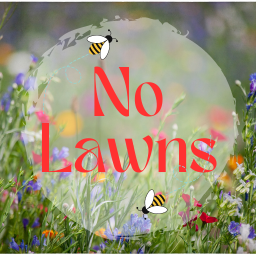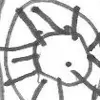I’ve been at war with Privet. No matter what I do, the little bugger comes back in full force. How do I get rid of this relentless plant for good?
Remove any sprouts as soon as they appear to exhaust the root energy reserves. You could also cover with something opaque so that when they grow they don’t recharge if you can’t stay on top of it closely enough. You’ll still need to go in and remove them periodically.
Do you think covering a stump that keeps trying to resprout would do the trick? There’s one growing right beside a rose bush that keeps trying to crowd it out. Would it hurt the rose bush to cover it?
The goal is to have all of the leaves completely in the dark to starve the plant. It will take time but yes it will work as long as it’s dark enough and no sprouts get around it. It won’t hurt the rose unless it blocks light oxygen or water to that plant.
Being at war with a plant often means that this very plant wants to tell you something. I used to be on a war against broom and a few other plants, and then learned about their medicinal properties and practical use. After getting to know my enemy well and respecting its function in the world, I managed to let go of that ‘Eliminate!!’ view of things and become way less frustrated.
Which made it possible to think about more long-term solutions:
On a landscape perspective, could you offer your landscape an alternative plant? Just removing something will usually not work because landscape wants cover, but sometimes you can plant something else in the same space that will gradually crowd the privet out or better, force it back into a more manageable space. Find some use for the privet - a quick Wikipedia search finds that ‘The decoction of privet leaves or bark helps to treat diarrhea, stomach ulcers, chronic bowel problems, chapped lips, sore mouths and throats, and a wash for skin problems.’ (Please do some research before using a plant medicinally and start with tiny amounts. Careful the berries are mildly toxic)
For gradual removal, you can alter the composition of your soil (a gradual work) so the privet doesn’t like it anymore. You can get help from allies like other plants, animals, fungi, microorganisms and add certain organic matter and/or minerals. A gradual process that will bring you very close to your landscape.
I believe quick and genocidal solutions against plants and animals who often have lived on ‘our land’ for longer than us is very old school. Getting to know them first and asking them politely to cede more space for our activities should probably be the way to go in the future.
Dude, we’re talking about a highly invasive Asian plant growing in North America. Birds rapidly spread its seeds, which germinate in natural areas and choke out/kill all sorts of native North American plant species. If this were a native species, the advice given here would be much different. Invasive Ligustrum lucidum should always be removed in the US
Privet also does just fine as a hedge, and people in the UK actually use it for this purpose. Ironically, that’s where I’ve seen privet growing—along borders, so people who hate privet might as well leave the stuff unless it’s in their way.
I live in the Southeastern US. It was originally introduced here as a hedge plant as well. Unfortunately it’s gotten wildly out of control and is very invasive. It crowds out other plants, cultivated and wild. I have a Jerusalem artichoke plant that it has a stump in the middle of and it keeps trying to grow higher than it to share it out.
Hm…you bring an interesting perspective.
I very much would like to never see any privet again in this area. Along with mimosa, tree of heaven, and kudzu. If you can’t tell already I’m from the Southeastern US, haha.
It is an uphill “battle” and yeah, doubtful I could win in actually removing all these plants for good. It’s frustrating to see how they destroy native plants that are useful and important to me and the creatures around me. I do think they have an overall negative impact on the biodiversity of the area, but I didn’t know about its medicinal uses. It’s easy to get into that mindset that it’s entirely negative. But you’re right, I’ve gotta try and see it holistically.
My main gripe with Privet in particular is that it’s growing in the middle of other plants. I’ve got a Jerusalem artichoke, fig bush, and scuppernong bush it’s trying to crowd out. I’d be worried about altering the soil composition for the sake of the plants that are already there that I’m trying to save.
It seems that its favorite place to grow is in disturbed forest, but it’s a very opportunistic plant and will grow outside of that, including in other plants. Sigh
Edit: I didn’t mention explicitly that it’s an invasive introduced to the area along with the other plants I mentioned. Just wanted to clarify that.
‘Uphill battle’ describes it quite well. I fought my invasive mimosa, at first just by cutting, then by cutting and burning, then with roundup. I never even had a chance. There are so called invasive species filling our rivers, growing in our forests, covering whole buildings. The battle is long lost, they will never return to their homelands and stay there. Also true is, at least with invasives in Europe, they don’t really invade untouched and natural landscape - but landscape which we have emptied, mined, grazed, chopped clean, burned, planted (often with these very invasives), polluted …
There is something in this ‘invasion’, ‘war’ and ‘battle’ metaphors leading back to people, and the way we try to keep undesired people out, and my perspective towards invasive plants has changed since comparing the two.
I think we have to come to terms with that in the moment our ancestors started wandering the earth they started to carry other animals, seeds, plants, microbes with them. Conservationism and removal of invasive species follow a logic that this process should have stopped at some point. I can completely understand the sentiment behind that. I wish colonialism had never happened. I wish no invasion had ever happened. But they did, and we all are the result of it. I can’t even imagine what would happen if we had a magical box, could turn the dial back to a date, and every species, every tribe would return to what were their homelands in that instant in time. But to what time period would we want to turn this dial even? What is the one true glorious point in the past we should all return to? By this logic, there would be no place to return to for many ‘mixed’ people, animals and plants.
So there is something unresolved, unsatisfying about the term ‘invasive species’. The idea behind denies the dynamic, changing, ever moving quality of all life.
I’m sorry if that helps very little with your privet. Another suggestion for the privet would be to research how it grows in its place of origin - what soil, what plant community? Maybe there’s something there you could work with.
deleted by creator
deleted by creator
I think it’s small leaf privet. It also goes by the name of “Chinese Privet” here. This is in the Southeastern US.
While there’s plenty of annoying seedlings, the cut stumps are my main problem. They like to grow in the middle of other already established plants. I’ve even tried poisoning the stumps, which I hate to do but I felt I had no other choice. It still came back.
deleted by creator
This is very helpful. Thanks.
deleted by creator
Assuming you’re dealing with a stump that’s regrowing, drill holes around the perimeter of the stump and pour in a bit of glyphosate, carefully so as not to get any on other plants. I’m no fan of poison, but I’ll be damned if I haven’t poisoned the fuck out of some Ligustrum in my day
If it’s a smaller rootball, you could try digging it up
Great idea. I’ve tried poisoning it with glyphosphate (I’m not a fan of poison either). I didn’t think of drilling holes, so I’ll have to try that. Thanks for your advice.
Good luck! This works best right after you cut a tree down, but I’ve found it works on older stumps too. Make sure you drill the holes near the cambium of the tree so the poison is transported into the roots
Depending on the area size in question: Mow as low as you can, add a layer of cardboard, layer of bark mulch, maybe a layer of dirt if feeling fancy, and then seed what you want on top.
Ugh, my backyard has this. I really, truly hate so much of what the previous previous owner did with the landscaping here. They did put in a couple of regional natives, but not in great locations for them. The rest is non-native and largely invasive.
I’ve got privet they put in the center of my backyard because they used to have a hot tub there and used it as like a hedge to separate it a little bit from the rest of the little backyard. Now it just looks like an ugly, tattered hedge in the middle of the yard growing at all kinds of weird angles. It just keeps spreading and spreading, even with my dogs periodically destroying it by running right through it and me cutting chunks off of it.
There’s also super thick weed fabric underneath of everything and plastic mesh underneath of the turfgrass they put in. It’s so hard to get rid of anything.
Cut near the ground, then take a dauber full of roundup/glyphosate concentrate and carefully put it on the cut, making sure to coat the outer edge of the cut.
You want to make sure to get it on the cambium layer in the bark, as this will be where the privet pulls the roundup down into the root, killing the extensive root system that privet can develop.
Note that even with using roundup it may take a couple years to actually kill the privet.





